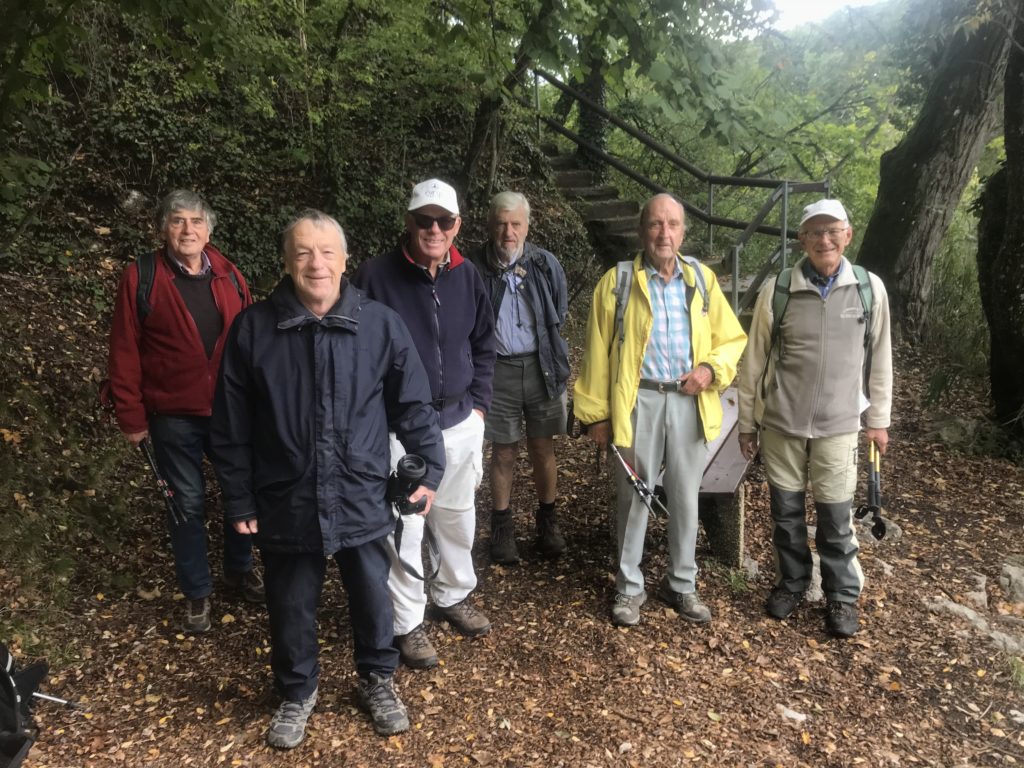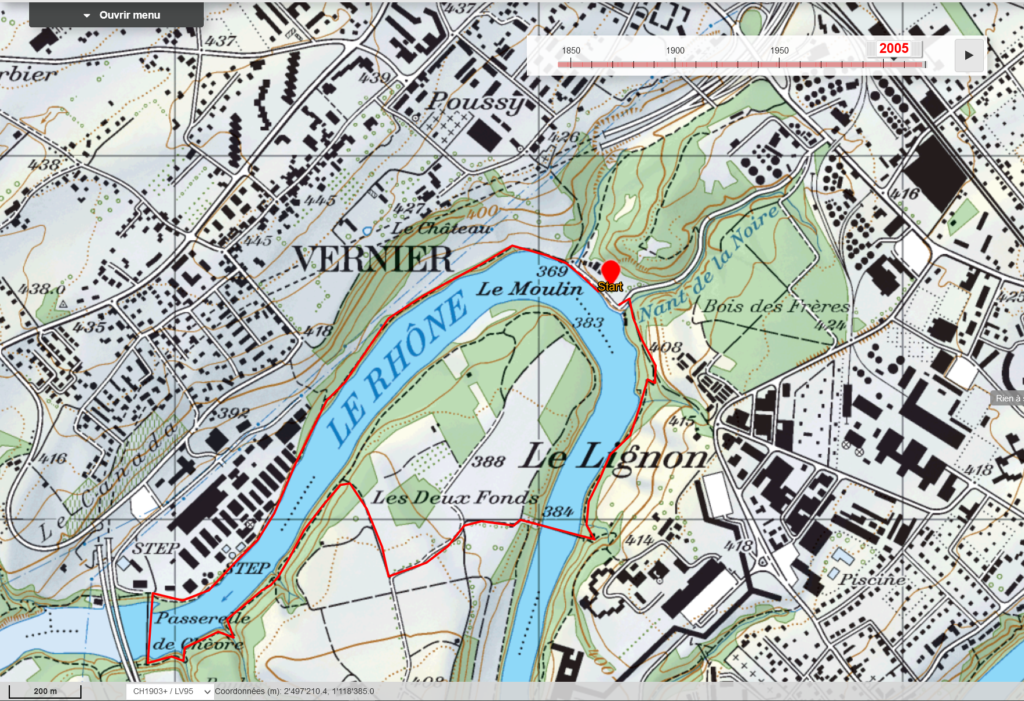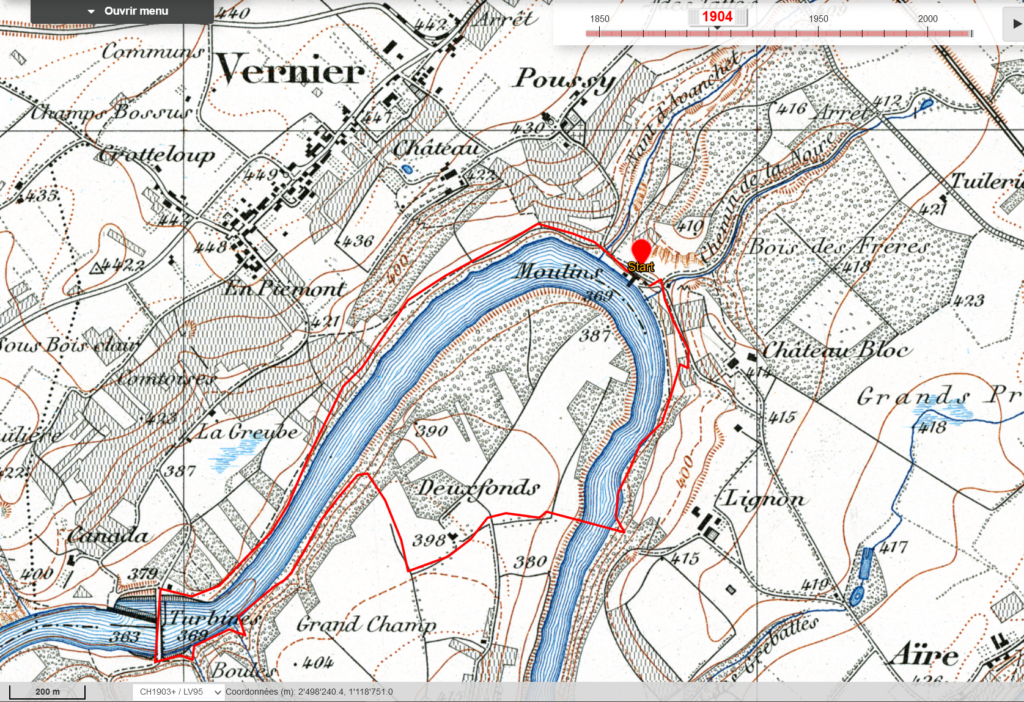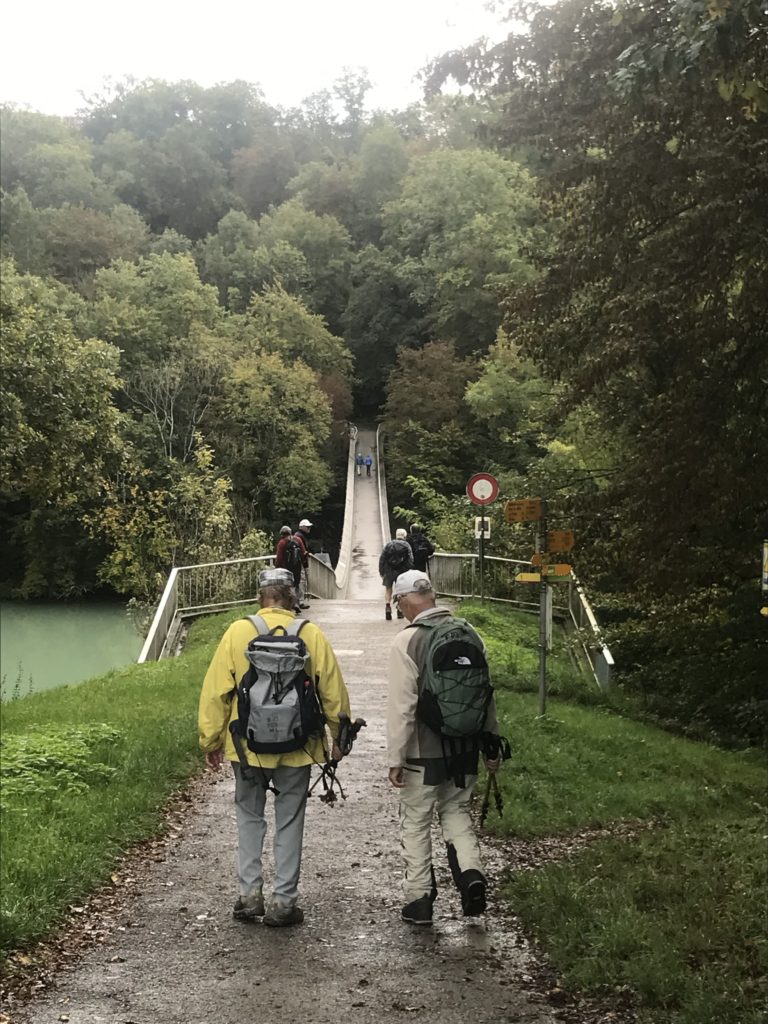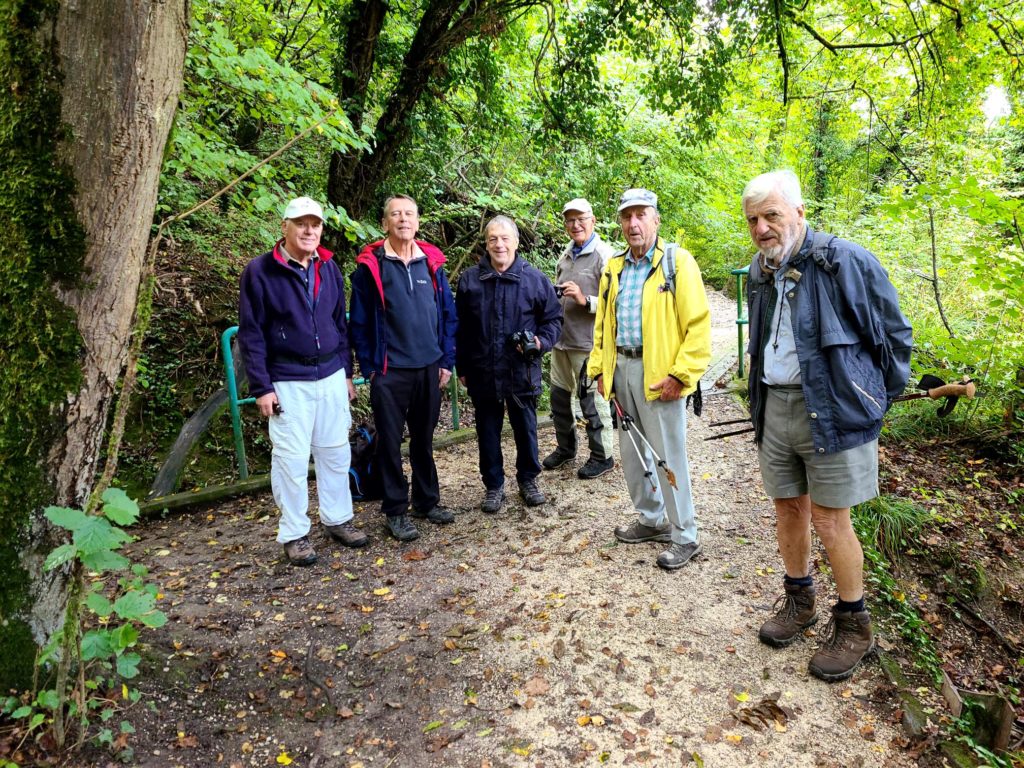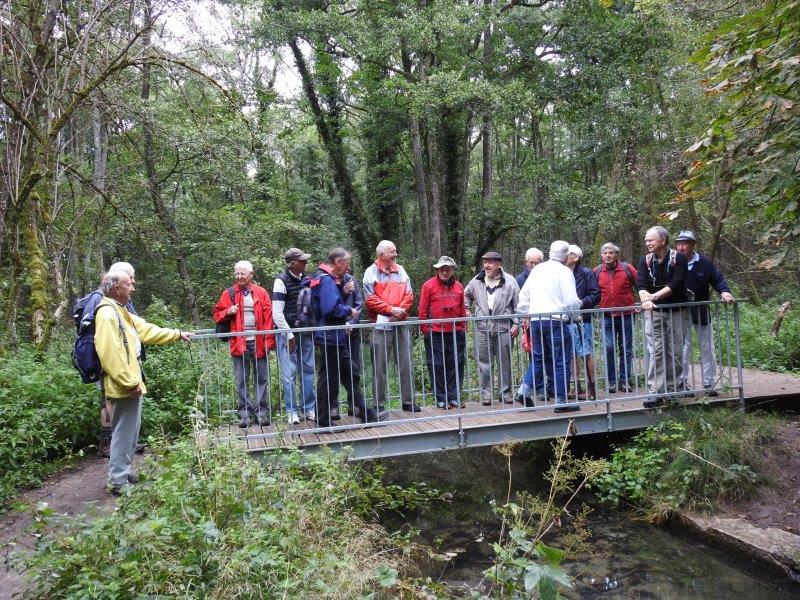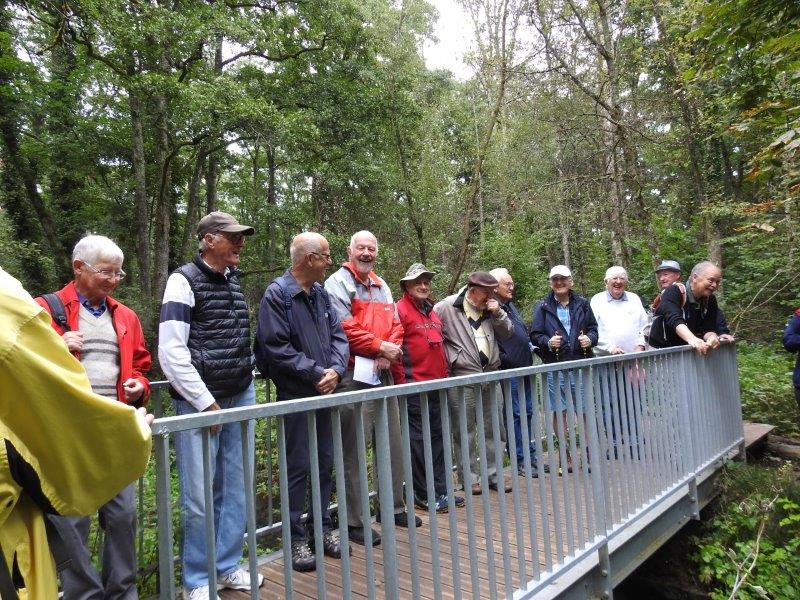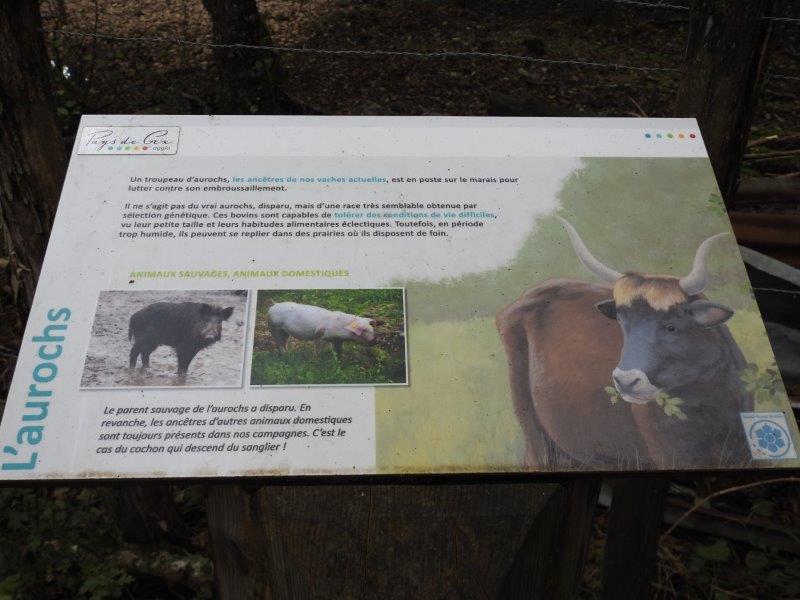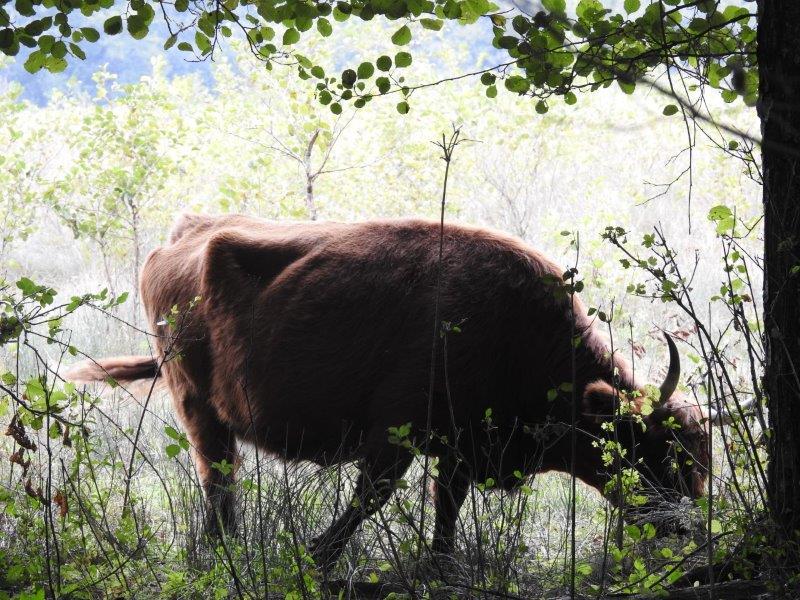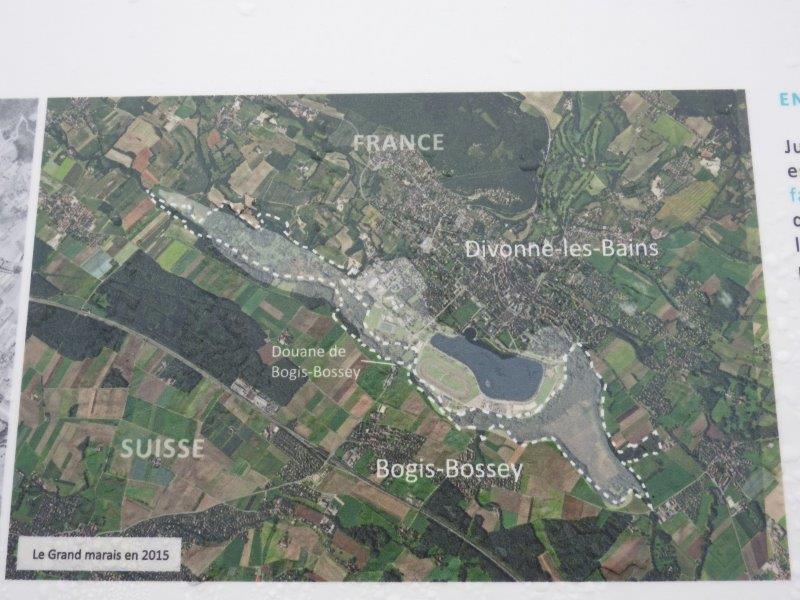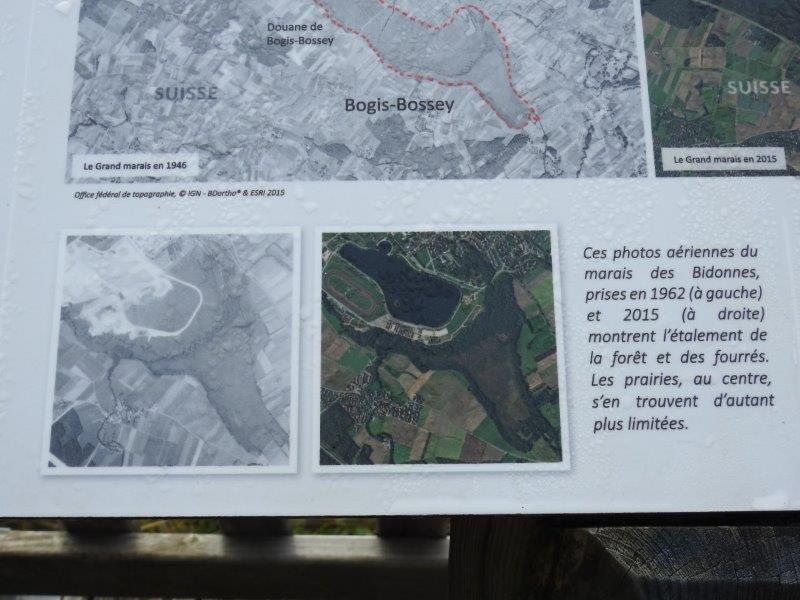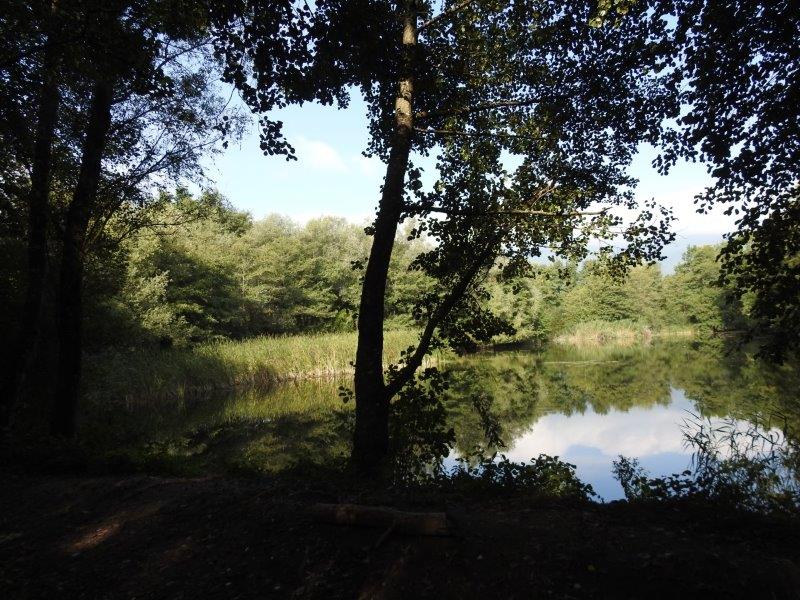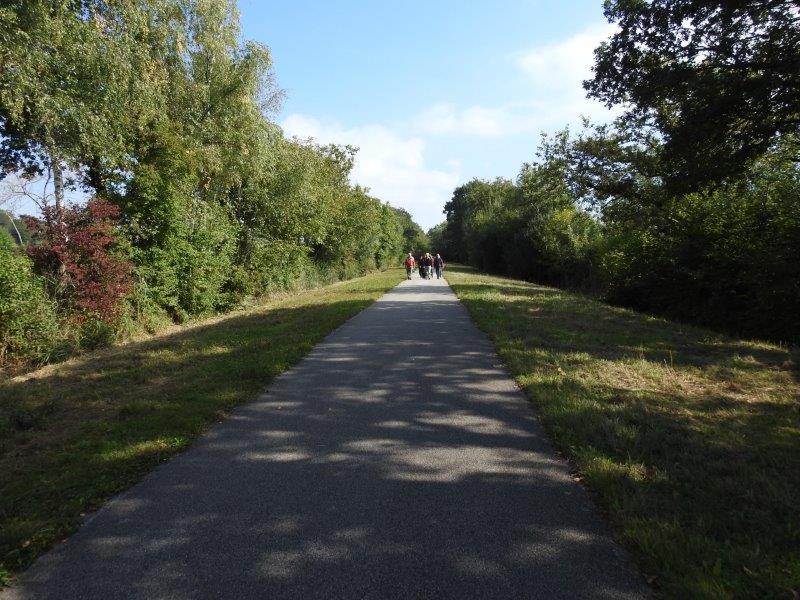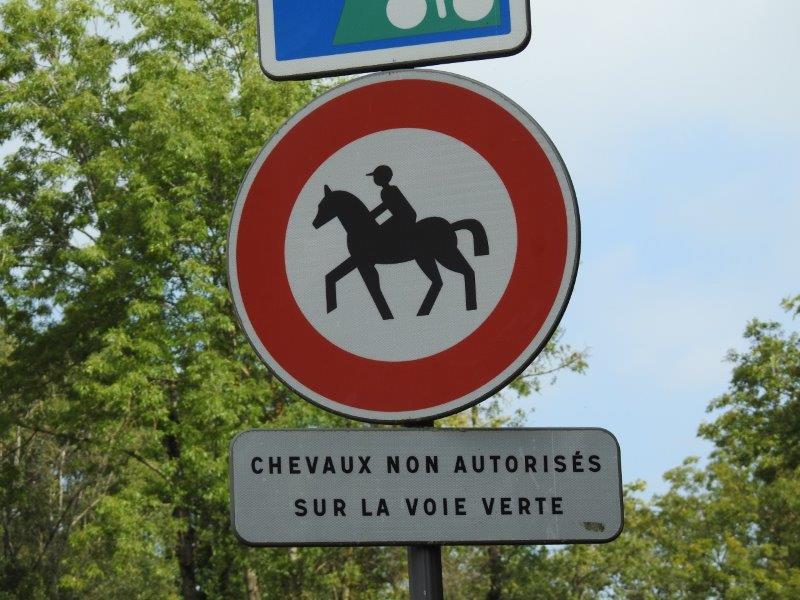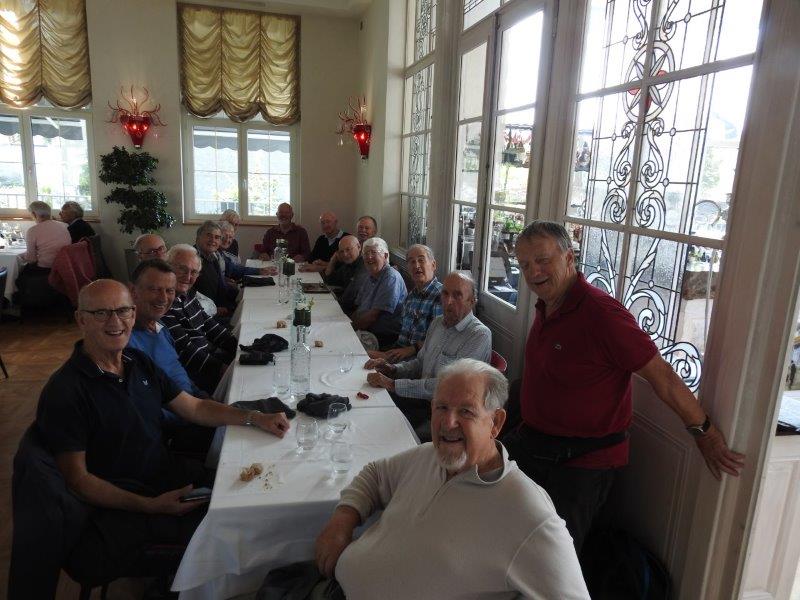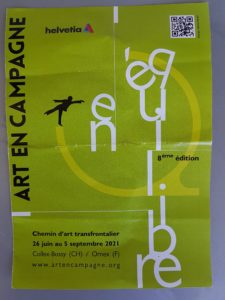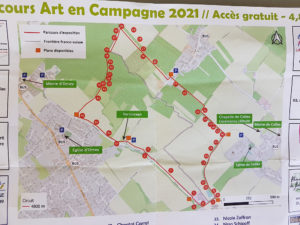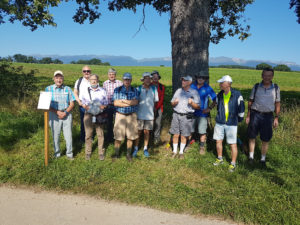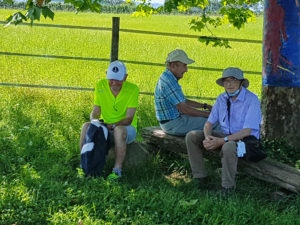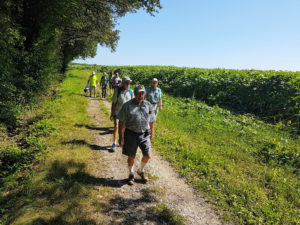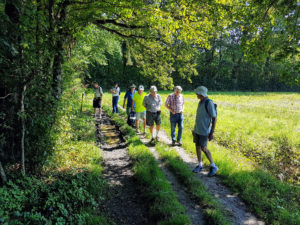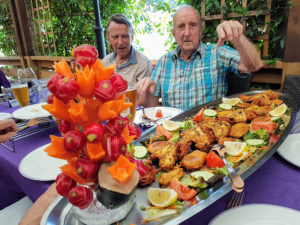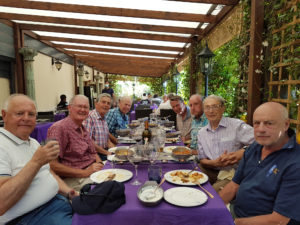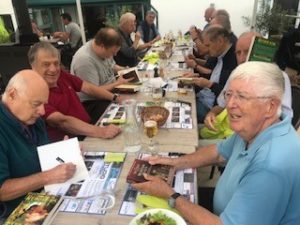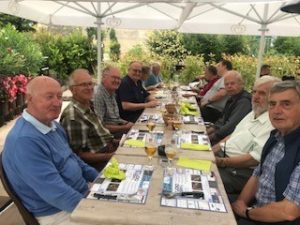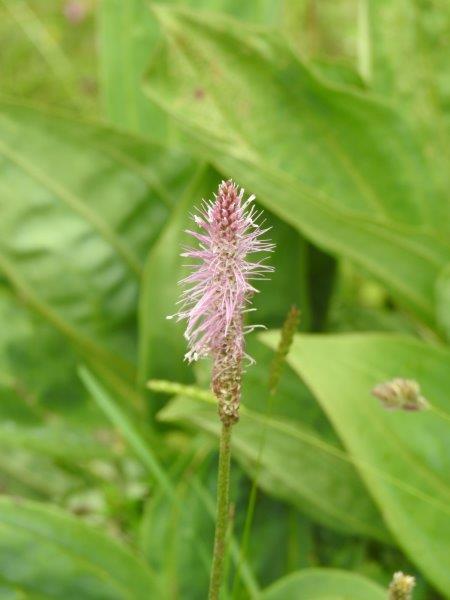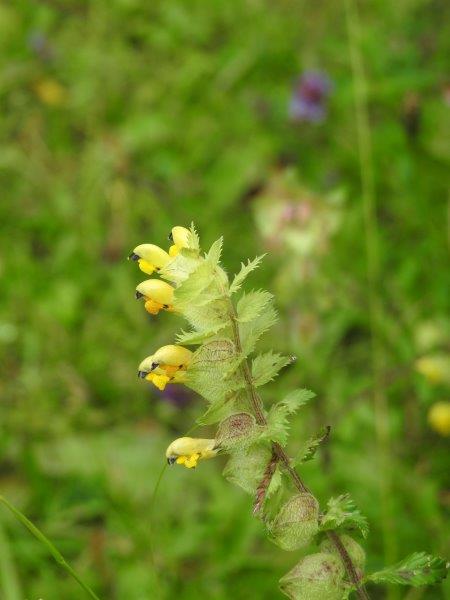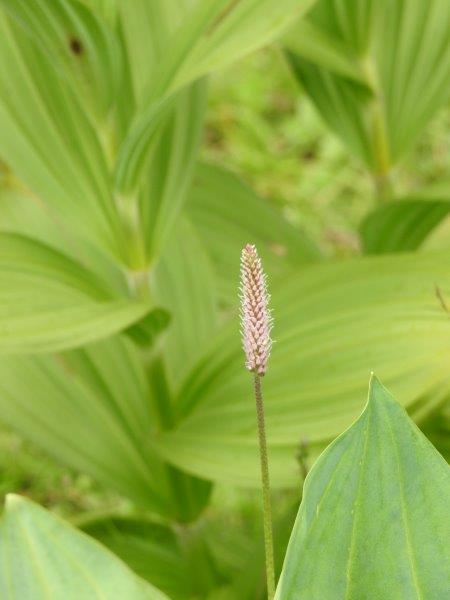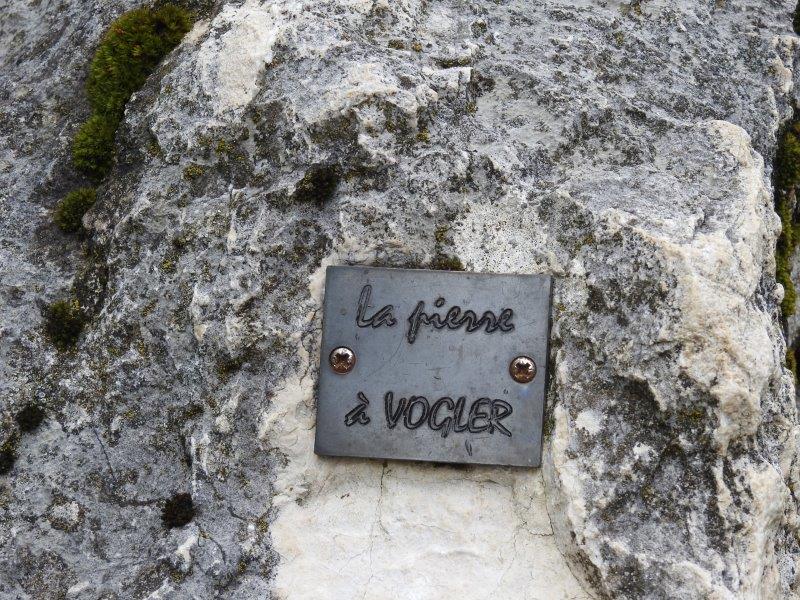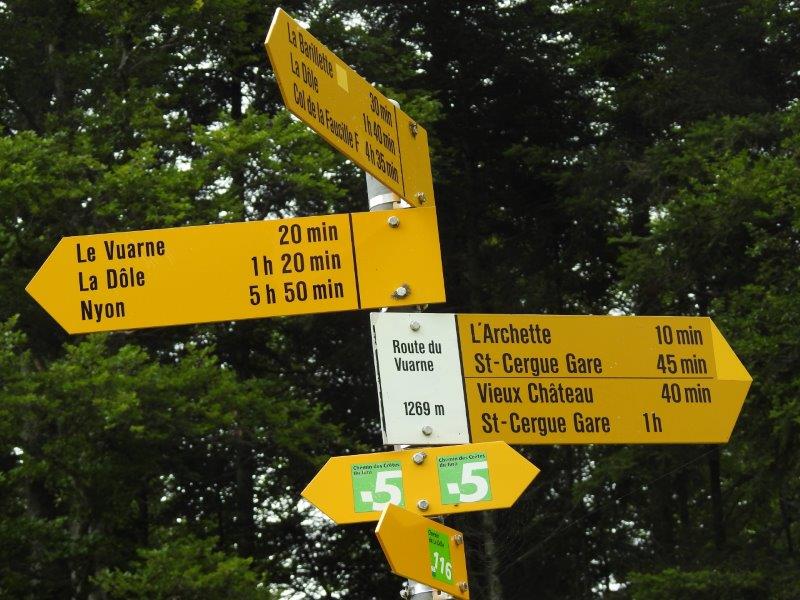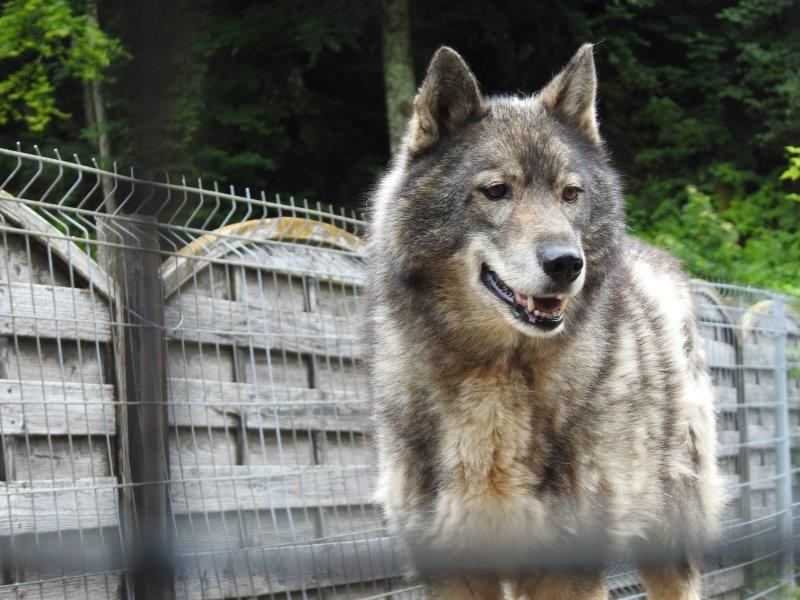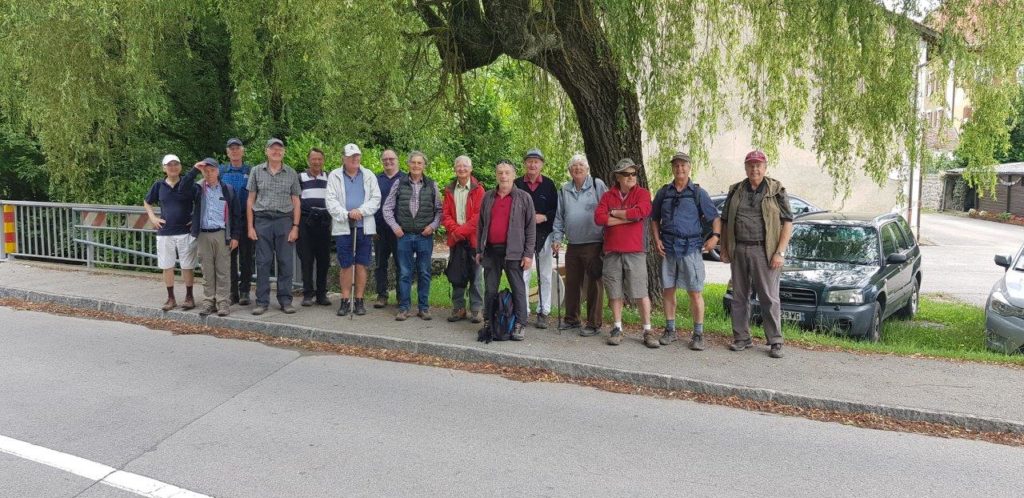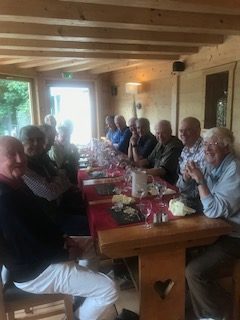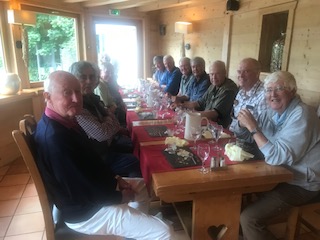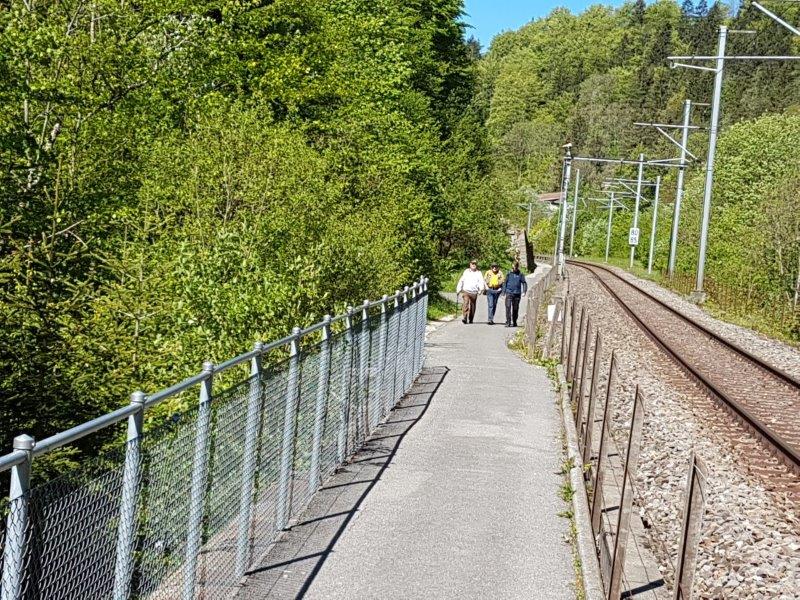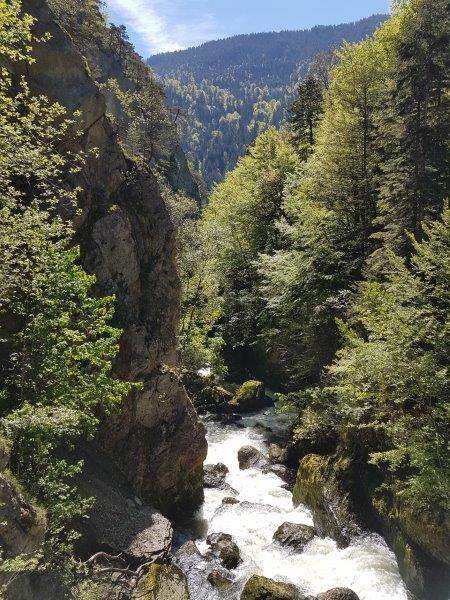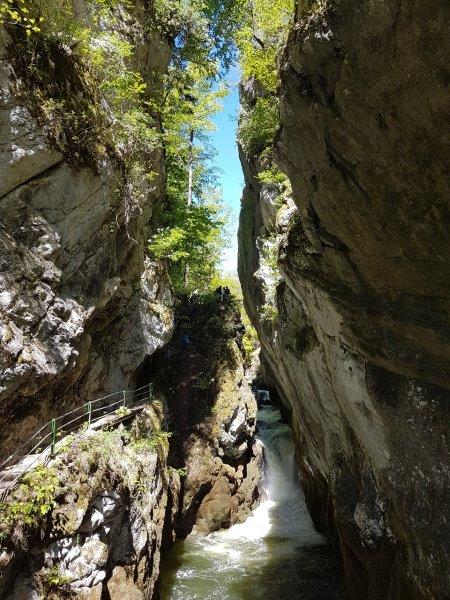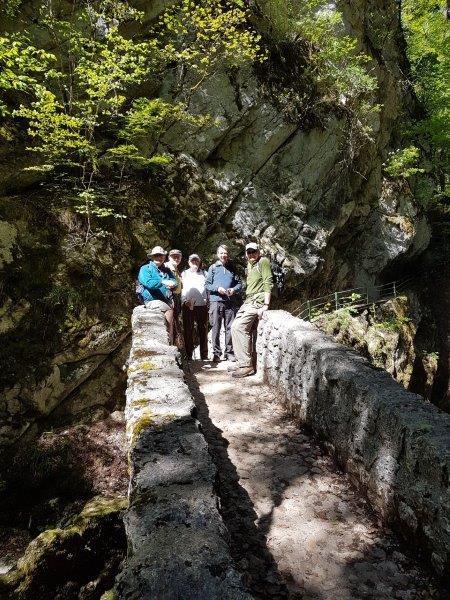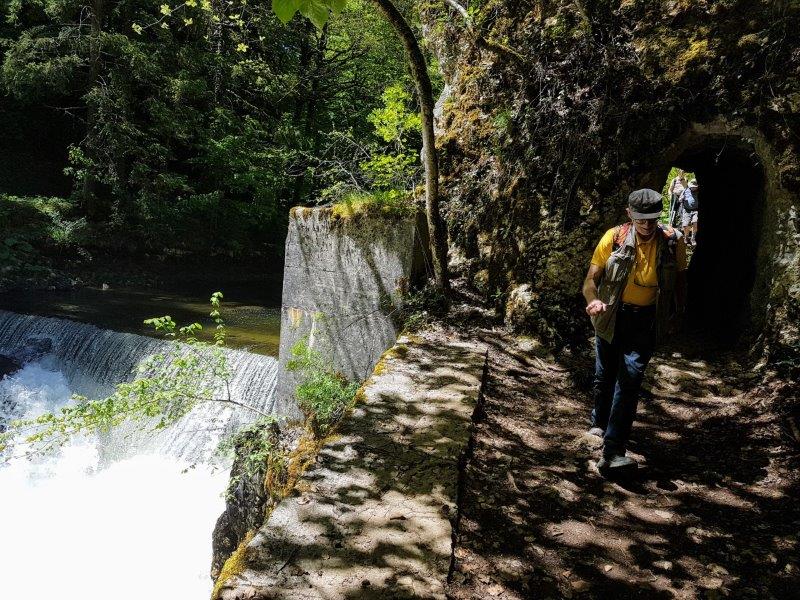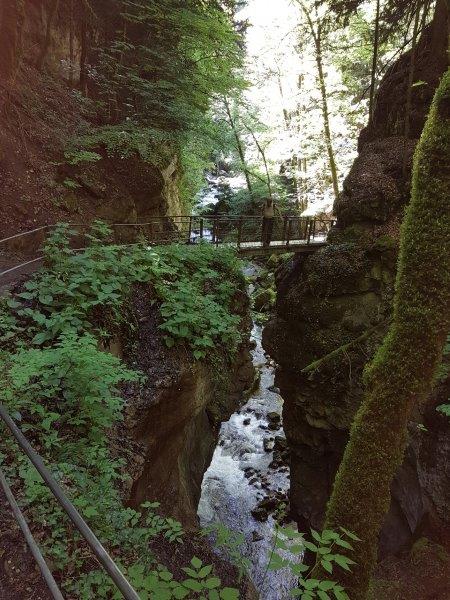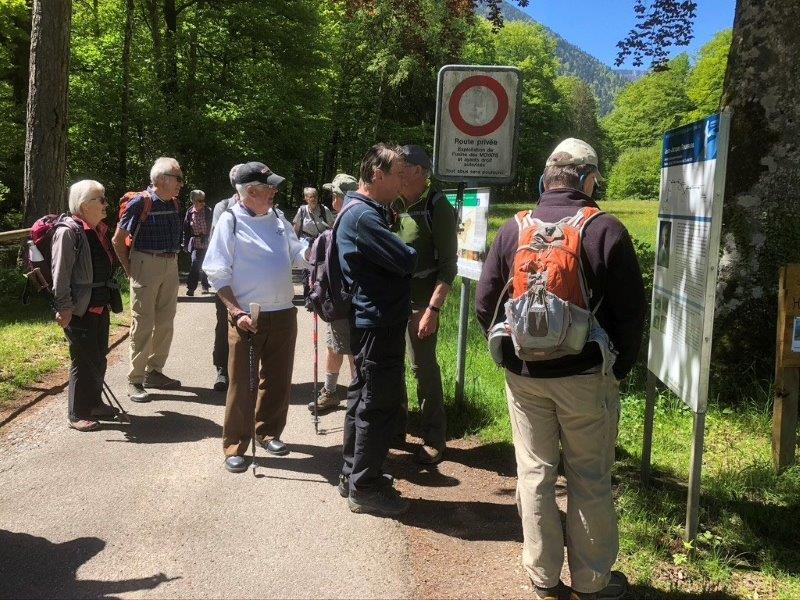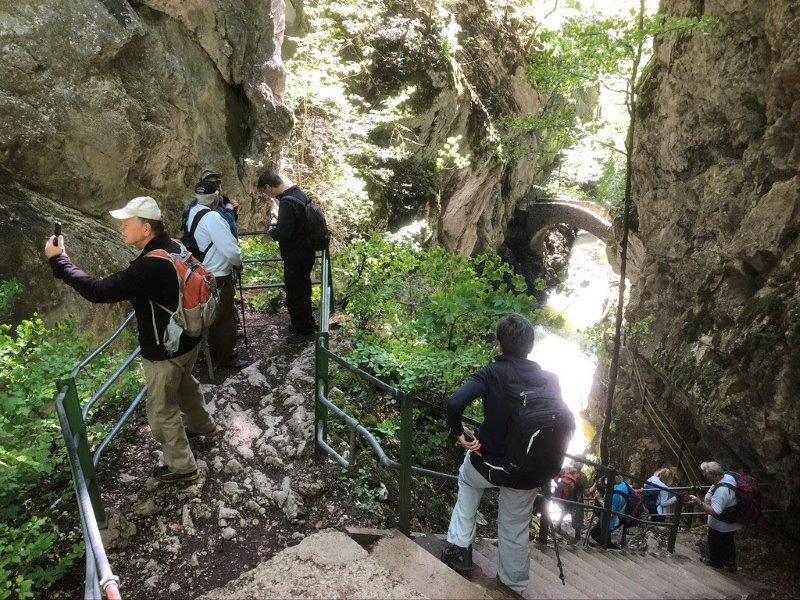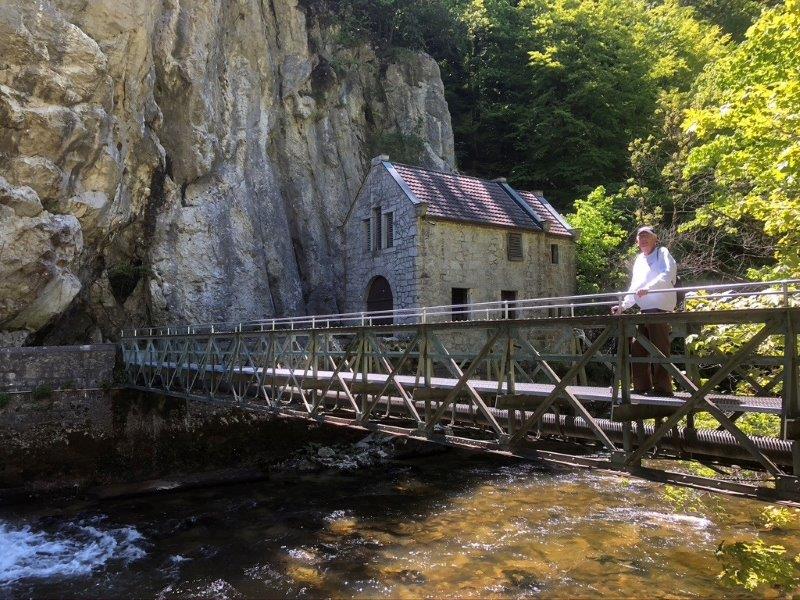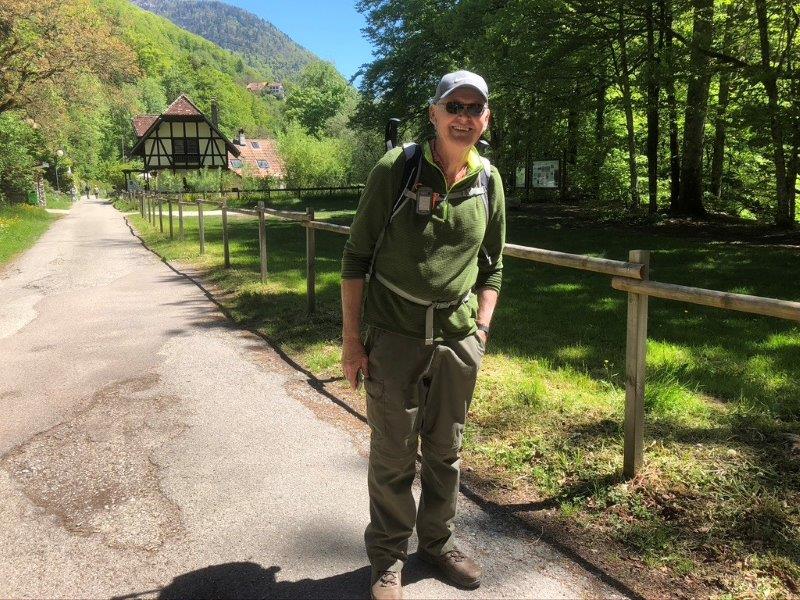A group of 11 (12, Paul can’t count) GIN E-Z Walkers took a stroll around the often-overlooked corners of Grand Saconnex. For some walkers it was a return to old stomping grounds, where their younger selves jogged and took children for nature walks.
The event began with mild chaos, as folks unused to the particularities of driving in an urban environment failed to find the entrance to the underground car park. The organizer had astutely removed the gates to the car park but the honest walkers nevertheless purchased parking tickets, fearful of the demonic Grand Saconnex Meter Maids.
The walk took us past a cute church, houses of the rich and famous, a few UN missions (India’s new mission, under construction, is huge, and led to discussions about that country’s geopolitical intentions), farms, a forest, a small nature reserve, WHO, and tunnel construction.
At the last section, a tour of the Domaine de Penthes, the group separated into three splinter groups.
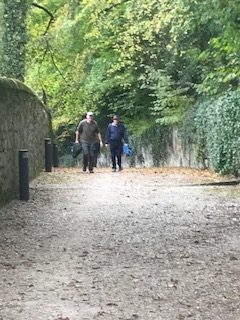
A few hardy souls attempted a steep short cut that left them huffing, the main group went straight to Domaine de Penthes, and a third group elected to save their energy and not to make the descent and subsequent ascent at this park. They were instructed to wait at the chateau, but being of independent demeanor, returned straightaway to the restaurant and started drinking before others arrived. This independence might be a violation of GIN etiquette, but on the other hand, it might be the new normal and their initiative should be applauded and emulated in the future. Time will tell.
In the Domaine de Penthes, Richard pointed out the exploding sequoia (too dramatic a tale to recount here). One walker sighted what he swore was the famous (and elusive) Grand Saconnex yeti, but admitted it might have been a large squirrel.
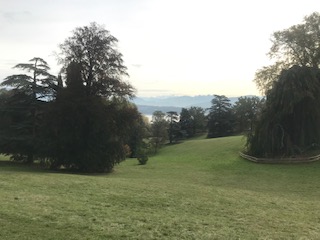
Lunch ensued, at which point Paul’s sloppy organizational skills were revealed, when the eight walkers who stayed for lunch were told that the plat du jour was finished and people had to order from the (more expensive than planned) menu. There were some grumbles, alleviated by beer and good food. Lunch conversation included such earth-shattering topics such as Tim’s career-highlight as Captain Corcoran in HMS Pinafore, whether Monty Don knows best how to grow a wildflower meadow, whether Colin Powell should have resigned rather than tell lies about Weapons of Mass Destruction, and how print-on-demand is changing the publishing industry.
Distance, about 7.2 km, time, almost three hours. Some walkers suggested this walk was on the hard end of the E-Z walking scale.
Richard Saynor, John Burley, Mike Price, Marks (2Rs & 2Ts), Norman Eatough, Tim Goodyear, Brian Allardyce, Philippe Jenkins, Wouter van Ginneken, Hubert Pettingell, Paul S.
Some of the above is true.

